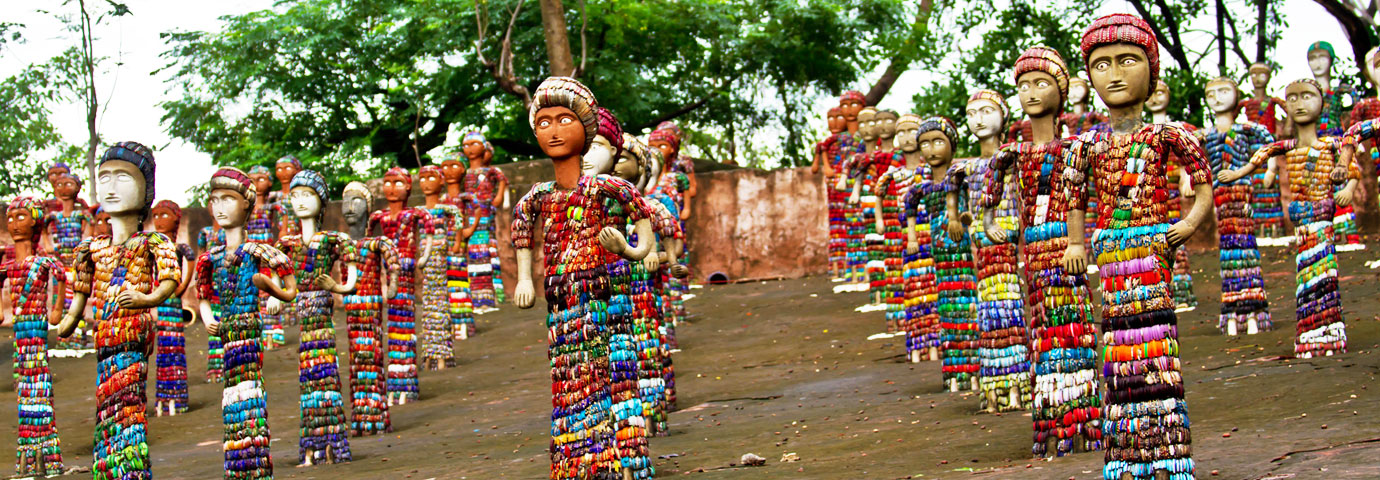If Varanasi symbolizes the spirit of ancient India, then Chandigarh is its city of 'today'. Visitors used to the meandering sprawls and historic skylines of most old Indian towns are surprised at the planned layout of Chandigarh and its sleek buildings. In fact, the city is considered as the Mecca of modern architecture and planning all over the world.
Ironically, this new city of India was born out of the partition of the country. A new capital city for the State of Punjab was required and Chandigarh was created to serve this purpose, and even more, to be the symbol of faith and confidence for the resurgent republic. Today, this is a reality. Chandigarh thrives as a palpable city of half a million people-proud of themselves and their duty.
In spite of its modern façades, at heart, Chandigarh is quite traditional. In fact, it is a strange mix of the old and the new-perhaps a city in transition. Amidst the array of slick departmental stores can be seen the pavement hawkers doing brisk sales. Small vendors from their ingenious mobile shops on bicycle backs offer attractive bargains. In the residential areas, the traditional rehriwallahs (cart shops) are very popular with the housewives for purchasing their daily needs. Even the city's fast-moving traffic roads are often slowed down by the presence of a 'holy cow' or a buffalo, sitting right in the center.
A city takes hundreds of years to develop a distinct personality and character of its own. But Chandigarh, barely 40 year old-an infant compared to other cities-has already come of age and assumed an ambience of its own. Built in the tradition of historic "new towns" of India like Mandu, Fatehpur Sikri and Jaipur, Chandigarh too is an act of the faith and daring.
History
Planned by the famous French architect Le Corbusier, Chandigarh was conceived as a city of "Sun, Space and Verdure" to fulfill four basic functions of living, working, circulation, and care of body and spirit. The master plan is a checkered mesh of rectangles called sectors, which are intended to be self-sufficient neighborhood units, enclosed by fast-moving traffic roads. In fact, a salient feature of the city plan is its novel movement system, which has a hierarchy of streets for different types of traffic. A number of city parks have been planned for the care of the body and spirit. The sun-bathed piazzas of the city, its neat housing clusters and the broad tree-lined avenues are visible manifestations of the planning precepts. No wonder Chandigarh is often called the "City Beautiful" or the "Garden City"-both fond epithets given to it by its residents.
Perhaps a major part of the city's modernity emanates from the fact that there is a very large body of youthful student population. The hub of its activities is the beautiful Panjab University campus with its impressive red sandstone buildings laid out amid gardens, water pools, and fountains. The idyllic campus surroundings inspire academic learning, scholarship and cultural enrichment. Besides the university, there are also many other premier institutions of medicine, engineering, architecture and science located in the city.
The other dominant species of the city populace is the Government servant-retired or serving. With the presence of two State Governments of Punjab and Haryana, and the third one of Chandigarh Administration, the city abounds with babus and bureaucrats and clerks in cars or on cycles.





